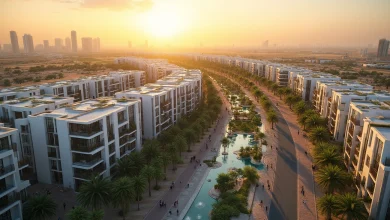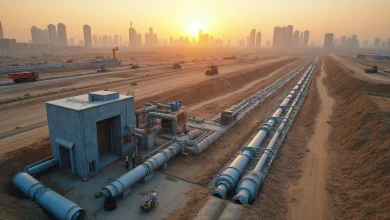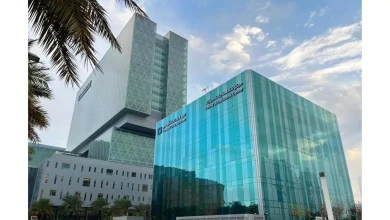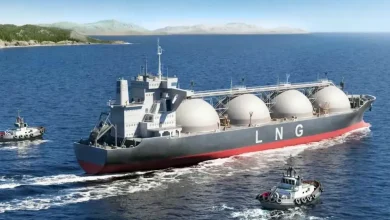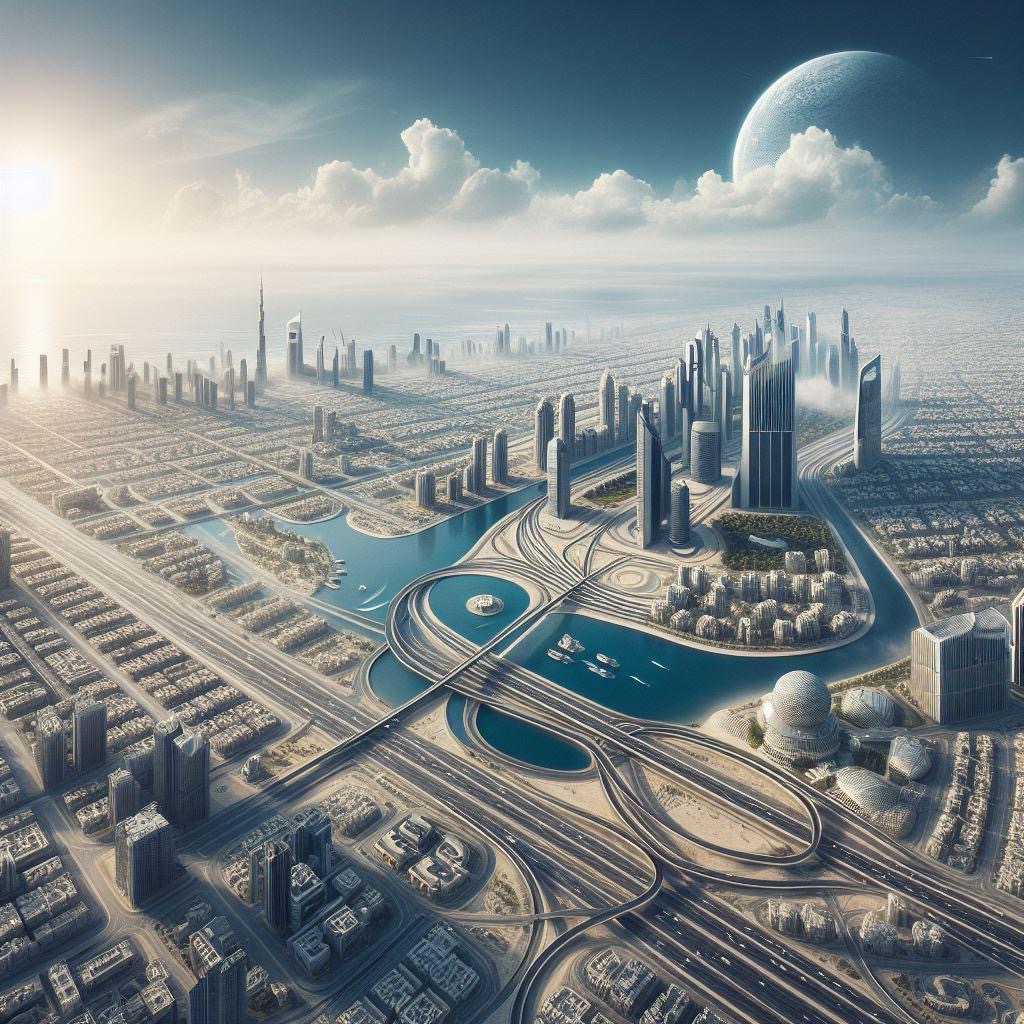
Skyline Symphony: The Architectural Ballet of Dubai
Dubai, the crown jewel of the United Arab Emirates, is a city that captivates the world with its awe-inspiring skyline. This architectural symphony is a testament to the city’s ambition, vision, and relentless pursuit of excellence. As one gazes upon the horizon, it becomes evident that Dubai is a city that refuses to settle for mediocrity. Instead, it reaches for the sky, pushing the boundaries of what is possible in architecture and design.
In this article, we will delve into the fascinating journey that has shaped Dubai’s skyline. We will explore the rise of this modern metropolis, fueled by a clear vision for the future and the transformative power of oil wealth. We will also discover the pioneering architects and engineers who have made Dubai’s architectural dreams a reality.
We will take a closer look at the iconic landmarks that define Dubai’s skyline, each one a testament to the city’s grandeur and ambition. From the towering Burj Khalifa, the tallest man-made structure in the world, to the awe-inspiring Palm Jumeirah, an artificial island wonder, and the modern urban oasis of Dubai Marina, these landmarks have become synonymous with Dubai’s architectural prowess.
But it doesn’t stop there. Dubai’s commitment to innovation and sustainability in architecture sets it apart from other cities. The city has embraced green building initiatives, integrating sustainable practices into its structures. It has also embraced the integration of smart technology, transforming buildings into intelligent entities that adapt to the needs of their inhabitants. Dubai’s architects continuously push the boundaries of design, creating structures that defy convention and redefine what is possible.
We will unravel the story behind Dubai’s architectural ballet, exploring the city’s rise, its iconic landmarks, and the innovative and sustainable practices that have shaped its skyline. Join us on this journey through time and architecture, as we discover the symphony that is Dubai’s skyline.
The Rise of Dubai’s Skyline
Dubai’s meteoric rise as a global city is best exemplified by its awe-inspiring skyline, which stands as a testament to the city’s ambition, innovation, and determination. As we delve into the story behind the creation of this architectural marvel, we witness a remarkable journey fueled by Dubai’s vision for the future, the transformative power of oil wealth, and the brilliance of pioneering architects and engineers.
Dubai’s Vision for the Future
Dubai’s leaders have always possessed an unwavering vision for the city’s future. Recognizing the need to diversify its economy beyond oil, they sought to transform Dubai into a hub for tourism, finance, and commerce. With this ambitious goal in mind, the city embarked on an unprecedented journey to redefine itself, starting with its skyline.
The Transformative Power of Oil Wealth
Dubai’s transformation from a modest trading port to a global metropolis was made possible by its vast reserves of oil. The discovery of oil in the 1960s propelled Dubai’s economy, providing the necessary funds to invest in infrastructural development on an unprecedented scale. This newfound wealth became the catalyst for the architectural renaissance that would eventually reshape Dubai’s skyline.
The Pioneering Architects and Engineers
Dubai’s skyline owes much of its grandeur to the brilliance and ingenuity of pioneering architects and engineers who dared to push the boundaries of design. Renowned architectural firms from around the world flocked to Dubai, eager to leave their mark on this rapidly evolving city. From the visionary designs of Adrian Smith and Gordon Gill to the groundbreaking engineering feats of Skidmore, Owings & Merrill, these talented individuals transformed Dubai’s skyline into a canvas for architectural innovation.
Dubai’s rise as a global city and its ambition to become a leader in the world of architecture did not happen overnight. It was a meticulously planned and executed effort, driven by a collective desire to create something extraordinary. In the next section, we will explore the iconic landmarks that have come to define Dubai’s skyline, showcasing the city’s ability to blend modernity with cultural heritage.
Iconic Landmarks that Define Dubai’s Skyline
Dubai’s skyline is a testament to the city’s ambition and determination to be at the forefront of architectural excellence. The city has become synonymous with breathtaking structures that push the boundaries of design and engineering. Let us explore some of the most iconic landmarks that define Dubai’s ever-evolving skyline.
Burj Khalifa: The Tallest Man-Made Structure
At the heart of Dubai’s skyline stands the magnificent Burj Khalifa, an engineering marvel that has captured the world’s imagination. Soaring to a height of 828 meters (2,717 feet), this towering structure is not only the tallest building in Dubai but also the tallest man-made structure in the world. Designed by the renowned architect Adrian Smith, the Burj Khalifa boasts a sleek and modern design that reflects Dubai’s commitment to innovation and progress. Its observation decks offer visitors breathtaking views of the city, providing a unique perspective on the surrounding landscape.
Palm Jumeirah: The Artificial Island Wonder
Dubai’s visionary approach to city planning is exemplified by the Palm Jumeirah, an incredible feat of engineering that has transformed the city’s coastline. Shaped like a palm tree, this man-made island stands as a testament to Dubai’s audacity and ambition. The Palm Jumeirah is not only a residential and commercial hub but also a tourist attraction, with its luxurious resorts, pristine beaches, and world-class amenities. Its unique design has become an iconic symbol of Dubai’s ability to turn ambitious dreams into reality.
Dubai Marina: The Modern Urban Oasis
Dubai Marina is a prime example of how Dubai seamlessly blends modernity with natural beauty. This waterfront development is a bustling cosmopolitan district that features an array of stunning skyscrapers, luxurious residences, and vibrant dining and entertainment venues. The Marina’s iconic skyline, with its gleaming towers reflecting on the tranquil waters, is a sight to behold. It has become a symbol of Dubai’s commitment to creating living spaces that offer a harmonious blend of nature and urban lifestyle.
Dubai’s skyline is not just about individual landmarks; it is a symphony of architectural brilliance that harmoniously blends together to create a mesmerizing urban landscape. The Burj Khalifa, Palm Jumeirah, and Dubai Marina are just a few examples of the innovative and awe-inspiring structures that have come to define Dubai’s skyline. Each landmark tells a story of Dubai’s vision, ambition, and determination to push the boundaries of what is possible in the world of architecture.
As we continue our journey through Dubai’s architectural ballet, we will explore the city’s commitment to innovation and sustainability in its architectural endeavors. From green building initiatives to the integration of smart technology, Dubai continues to lead the way in creating a sustainable and future-forward built environment. Join us as we delve into the next section, “IV. Innovation and Sustainability in Dubai’s Architecture.”
Innovation and Sustainability in Dubai’s Architecture
Dubai’s awe-inspiring skyline is not only known for its grandeur and opulence but also for its commitment to innovation and sustainability in architecture. As the city continues to grow, it has made significant strides in embracing environmentally friendly practices and integrating cutting-edge technology into its urban landscape.
Green Building Initiatives
Dubai has taken a proactive approach to minimize its ecological footprint by implementing various green building initiatives. One such initiative is the Dubai Green Building Regulations and Specifications, which sets guidelines for sustainable construction practices. This includes using energy-efficient materials, optimizing water usage, and incorporating renewable energy sources into building designs.
The city’s commitment to green buildings is exemplified by projects like the Burj Khalifa, which has achieved LEED (Leadership in Energy and Environmental Design) Platinum certification. The iconic tower incorporates features such as solar panels, efficient cooling systems, and a greywater recycling system, significantly reducing its energy consumption and environmental impact.
Integration of Smart Technology
Dubai’s architectural landscape is not only sustainable but also highly interconnected through the integration of smart technology. The city has embraced the concept of a smart city, where technology is seamlessly integrated into the urban fabric to enhance the quality of life for its residents.
From smart lighting systems that adjust based on natural light levels to advanced waste management systems utilizing sensors and data analytics, Dubai is at the forefront of leveraging technology to create a more efficient and sustainable city. This integration of smart technology not only reduces energy consumption but also enhances the overall livability of the city.
Pushing the Boundaries of Design
Dubai’s commitment to innovation is evident in its willingness to push the boundaries of design. The city serves as a canvas for some of the world’s most renowned architects and engineers, who have been given the freedom to explore their wildest imaginations.
Projects like the Dubai Frame, a towering structure that frames the city’s panoramic views, and the Dubai Opera, a stunning architectural masterpiece inspired by traditional Arabian dhow boats, showcase the city’s dedication to unique and daring designs. These structures not only contribute to the city’s skyline but also serve as symbols of Dubai’s progressive mindset and desire to be a global hub for innovation and creativity.
Dubai’s architectural ballet goes beyond mere aesthetics. It embodies the city’s commitment to innovation and sustainability. From green building initiatives to the integration of smart technology and pushing the boundaries of design, Dubai’s architecture is a testament to its vision of a sustainable and technologically advanced future. As the city continues to evolve, it will undoubtedly inspire other metropolises around the world to embrace innovation and sustainability in their own architectural endeavors.
Dubai’s skyline is an architectural symphony that captivates the world with its audacious designs and visionary projects. From the towering heights of the Burj Khalifa to the man-made wonder of Palm Jumeirah, Dubai has become a global icon of modernity and innovation.
The rise of Dubai’s skyline can be attributed to a combination of factors, starting with the ambitious vision of its leaders. Their unwavering determination to transform Dubai into a global city of the future has fueled the rapid growth and development of its skyline. Moreover, the transformative power of oil wealth has played a significant role in financing these ambitious projects, turning Dubai into a playground for architectural experimentation.
Behind these awe-inspiring structures are the pioneering architects and engineers who have pushed the boundaries of design and engineering. They have embraced the challenge of creating groundbreaking structures that not only redefine architectural possibilities but also reflect Dubai’s unique identity. Their creativity and technical expertise have contributed to the creation of a skyline that is both visually striking and symbolically meaningful.
Dubai’s skyline is defined by a collection of iconic landmarks that have become symbols of the city’s grandeur. The Burj Khalifa, the tallest man-made structure in the world, stands as a testament to Dubai’s ambition and determination to reach new heights. Palm Jumeirah, an artificial island wonder, showcases Dubai’s ability to transform its natural landscape into a luxurious oasis. Dubai Marina, a modern urban sanctuary, exemplifies the city’s dedication to creating vibrant and sustainable communities.
Innovation and sustainability are core principles that guide Dubai’s architectural endeavors. The city has embraced green building initiatives, integrating environmentally friendly practices into its construction projects. From energy-efficient designs to the use of renewable materials, Dubai is committed to reducing its carbon footprint and creating a more sustainable future.
Dubai’s architecture embraces smart technology and automation, elevating the city’s infrastructure to new heights of efficiency and convenience. The integration of advanced systems and intelligent design solutions enhances the overall experience of living and working in Dubai, making it a truly smart city.
Dubai’s skyline is a testament to the city’s relentless pursuit of excellence in design, sustainability, and innovation. It showcases the remarkable achievements that can be attained when a vision is backed by unlimited ambition and resources. As Dubai continues to evolve and reinvent itself, one can only imagine the architectural wonders that will grace its skyline in the years to come.
Dubai’s skyline is a testament to human ingenuity, ambition, and the limitless possibilities of architectural design. It stands as a symbol of Dubai’s transformation from a humble trading port to a global metropolis. With its iconic landmarks, commitment to innovation and sustainability, Dubai’s skyline has become a source of inspiration and admiration for the world. The architectural ballet of Dubai is an ongoing performance, where each new addition to the skyline adds another note to the symphony, captivating our attention and leaving us in awe of this remarkable city.



